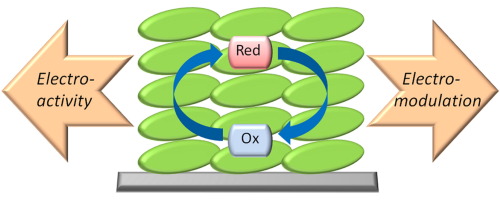当前位置:
X-MOL 学术
›
Bioelectrochemistry
›
论文详情
Our official English website, www.x-mol.net, welcomes your
feedback! (Note: you will need to create a separate account there.)
A journey in the complex interactions between electrochemistry and bacteriology: From electroactivity to electromodulation of bacterial biofilms.
Bioelectrochemistry ( IF 4.8 ) Pub Date : 2019-10-14 , DOI: 10.1016/j.bioelechem.2019.107401 Dominika Czerwińska-Główka 1 , Katarzyna Krukiewicz 1
Bioelectrochemistry ( IF 4.8 ) Pub Date : 2019-10-14 , DOI: 10.1016/j.bioelechem.2019.107401 Dominika Czerwińska-Główka 1 , Katarzyna Krukiewicz 1
Affiliation

|
Although the term bioelectrochemistry tends to be associated with animal and human tissues, bioelectric currents exist also in plants and bacteria. Especially the latter, when agglomerated in the form of biofilms, can exhibit electroactivity and susceptibility to electrical stimulation. Therefore, electrochemical methods appear to become powerful techniques to expand the conventional strategies of biofilm characterization and modification. In this review, we aim to provide the insight into the electrochemical behaviour of bacteria and present the variety of electrochemical techniques that can be used either for the non-destructive monitoring of bacterial communities or modulation of their growth. The most common applications of electrical stimulation on biofilms are presented, including the prevention of bacterial growth by charging the surface of the materials, changing the direction of bacterial movement under the influence of the electric field and increasing of the potency of antibiotics when bactericides are coupled with the electric field. Also, the industrial applications of microbial electro-technologies are described, such as bioremediation, wastewater treatment, and microbial fuel cells. Consequently, we are showing the complexity of interactions that exist between electrochemistry and bacteriology that can be used for the benefit of these two disciplines.
中文翻译:

电化学与细菌学之间复杂相互作用的旅程:从电活性到细菌生物膜的电调制。
尽管术语“生物电化学”倾向于与动物和人类组织相关联,但生物电流也存在于植物和细菌中。尤其是后者,当以生物膜的形式聚集时,可以表现出电活性和对电刺激的敏感性。因此,电化学方法似乎成为扩展生物膜表征和修饰的常规策略的强大技术。在这篇综述中,我们旨在提供对细菌电化学行为的深入了解,并介绍可用于细菌群落的非破坏性监测或调节其生长的多种电化学技术。介绍了电刺激在生物膜上最常见的应用,包括通过使材料表面带电来防止细菌生长,在电场的影响下改变细菌运动的方向以及在将杀菌剂与电场耦合时提高抗生素的效力。此外,还描述了微生物电子技术的工业应用,例如生物修复,废水处理和微生物燃料电池。因此,我们显示了电化学和细菌学之间相互作用的复杂性,可以使这两个学科受益。描述了微生物电子技术的工业应用,例如生物修复,废水处理和微生物燃料电池。因此,我们显示了电化学和细菌学之间相互作用的复杂性,可以使这两个学科受益。描述了微生物电子技术的工业应用,例如生物修复,废水处理和微生物燃料电池。因此,我们显示了电化学和细菌学之间相互作用的复杂性,可以使这两个学科受益。
更新日期:2019-10-14
中文翻译:

电化学与细菌学之间复杂相互作用的旅程:从电活性到细菌生物膜的电调制。
尽管术语“生物电化学”倾向于与动物和人类组织相关联,但生物电流也存在于植物和细菌中。尤其是后者,当以生物膜的形式聚集时,可以表现出电活性和对电刺激的敏感性。因此,电化学方法似乎成为扩展生物膜表征和修饰的常规策略的强大技术。在这篇综述中,我们旨在提供对细菌电化学行为的深入了解,并介绍可用于细菌群落的非破坏性监测或调节其生长的多种电化学技术。介绍了电刺激在生物膜上最常见的应用,包括通过使材料表面带电来防止细菌生长,在电场的影响下改变细菌运动的方向以及在将杀菌剂与电场耦合时提高抗生素的效力。此外,还描述了微生物电子技术的工业应用,例如生物修复,废水处理和微生物燃料电池。因此,我们显示了电化学和细菌学之间相互作用的复杂性,可以使这两个学科受益。描述了微生物电子技术的工业应用,例如生物修复,废水处理和微生物燃料电池。因此,我们显示了电化学和细菌学之间相互作用的复杂性,可以使这两个学科受益。描述了微生物电子技术的工业应用,例如生物修复,废水处理和微生物燃料电池。因此,我们显示了电化学和细菌学之间相互作用的复杂性,可以使这两个学科受益。











































 京公网安备 11010802027423号
京公网安备 11010802027423号